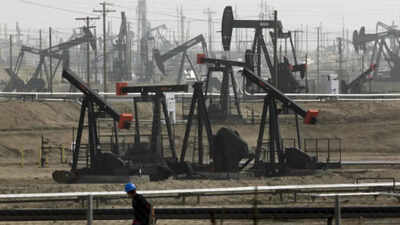Arabian Post Staff -Dubai

OPEC+ has reaffirmed its commitment to existing production limits, maintaining its current output policy amidst ongoing market volatility and fluctuating demand. The decision underscores the group’s strategy of a gradual adjustment in oil supply, aimed at stabilizing the global market amid uncertainties.
The meeting held by the oil-producing coalition, which includes members of the Organization of the Petroleum Exporting Countries (OPEC) and allied producers such as Russia, concluded with a consensus to keep production quotas unchanged. This move reflects the group’s cautious approach in response to the unpredictable nature of global oil markets.
Despite facing economic pressures and shifts in consumer demand, OPEC+ believes that its current strategy aligns with broader market conditions. The group’s adherence to its production limits comes as a response to mixed signals from the global economy. Recent data shows variable demand patterns, influenced by geopolitical tensions and shifting economic forecasts.
Oil prices have experienced considerable volatility in recent months, driven by factors such as inflationary pressures and changing economic policies in major economies. These fluctuations have led to divergent expectations about future demand, adding complexity to market forecasting.
The coalition’s decision is also influenced by the need to balance supply and demand dynamics. By maintaining current production levels, OPEC+ aims to avoid exacerbating price swings that could destabilize the market. The group’s focus remains on achieving a stable and predictable oil market, which is crucial for both producers and consumers.
Key players in the oil market have observed that while OPEC+ has opted for stability, the global energy landscape continues to evolve. Advances in alternative energy sources and shifts in consumer behavior are reshaping demand patterns, compelling oil producers to navigate an increasingly complex market environment.
Economic analysts have noted that OPEC+’s decision may have implications for global oil prices, particularly if demand continues to show significant variability. The group’s policy stance will likely influence short-term price movements, while longer-term trends will be shaped by broader economic developments and technological advancements in energy.
In the broader context of global energy markets, the role of OPEC+ remains pivotal. As a major force in oil production and pricing, the group’s policies have far-reaching effects on energy markets worldwide. Its decisions are closely watched by industry stakeholders, policymakers, and investors, all of whom are keenly attuned to shifts in production strategies and their potential impact on the global economy.
Looking ahead, the ability of OPEC+ to adapt to changing market conditions will be crucial. The coalition’s approach to managing production quotas amidst economic and geopolitical uncertainties highlights the complex interplay between supply, demand, and price stability in the oil market.
The current stance by OPEC+ illustrates its ongoing commitment to managing market stability through controlled production levels, reflecting a strategic response to the multifaceted challenges facing the global oil industry. As market conditions evolve, the group’s ability to navigate these challenges will remain a key factor in determining the future trajectory of oil prices and market stability.


